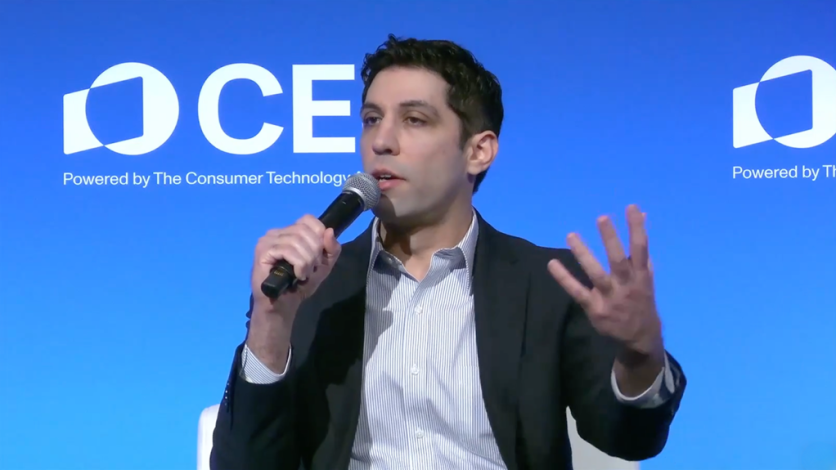
At the heart of the Venetian Hotel's Convention Center during CES 2025 last week, there was an audible excitement as attendees left the "Tech in Regenerative Medicine" panel held at the Marcello Ballroom. Over the course of a fascinating session moderated by healthcare reporter Cassie McGrath and featuring Xenco Medical Founder and CEO Jason Haider and Terumo BCT's General Manager of Global Therapy Innovations Veerle D'Haenens as the headlining speakers, the panelists gave a captivating reflection on the state of regenerative medicine and an awe-inspiring vision for the future of the field as it continues to converge with tech. The panelists took the stage on Thursday and touched on everything from tech-enabled gene editing to AI-driven protein folding to bioprinting and cell therapy, as well as the implications of in-silico clinical trials that use digital twins for innovation in the future.
Early in the panel, Xenco Medical's Jason Haider set the tone with a compelling parallel between the semiconductor revolution in 1965 and regenerative medicine in 2025. Haider told the audience that he saw a striking resemblance between the independent advancement and eventual convergence of photolithography, doping techniques, and material purification that made the invention of the integrated circuit possible and the convergent moment that regenerative medicine finds itself in 2025. He noted that just as the exponential rise in computing power predicted in Moore's Law in 1965 spawned transformative technological movements from the personal computing revolution to the internet revolution to AI, we will see an equally stunning blossoming of industries emanating from regenerative medicine today. To make his case about the advancements of disparate fields and their convergence into regenerative medicine today, Haider pointed to the independent progress of 3D printing from its invention in 1984 to today, the advancement of protein folding theory from Christian Anfinsen's discoveries in 1961 to Alphafold today, and to the progress made in gene-editing from Herb Boyer and Stanley Cohen's creation of Recombinant DNA in 1973 to the use of AI to design guide RNAs today. When asked by the moderator Cassie McGrath to share examples of work being undergone at the respective companies of the speakers, Terumo BCT's Veerle D'Haenens shared a company story about Terumo BCT's technology that filters defective red blood cells in patients with Sickle Cell disease and their subsequent replacement by healthy cells from donors. D'Haenens offered that as our capabilities to select healthier cells increase, we will find ourselves closer to personalized medicine. In response to McGrath's question, Haider noted that Xenco Medical has made "cascaded regeneration" central to its mission and detailed how the company is leveraging the principles of mechanotransduction to amplify bone growth in patients implanted with the company's regenerative biomaterial. He continued by noting that every human cell is mechanosensitive and that mechanical loads and stresses translate into biochemical signals that release growth factors in a patient's anatomy. Haider explained that the company developed a longitudinal intervention that begins with the implantation of a bone-forming biomaterial and continues with an AI-powered platform during recovery that cascades the tissue regeneration by adjusting prescribed motions over time to optimize growth factor release.
McGrath then asked the panelists to describe what they see the future of Regenerative Medicine looking like in the next 5 to 10 years and what trends they see defining it. Haider told the audience that he sees widespread adoption of in-silico clinical trials in the next 5 years as transforming regenerative medicine by enabling an efflorescence of innovation from small teams of researchers who will be able to provide computational simulations of their proposed drugs and devices on virtual patient populations as a large part of the documentation required in their regulatory submissions rather than relying solely on real-world evidence. Haider cited an October 2024 report by the FDA that supported the use of New Alternative Methods in future submissions, which included using in-silico trials with simulated virtual patients to fast-track the commercialization of medical technologies. He continued by noting that in 10 years, he sees the sophistication of patient-specific digital twins for treatment decisions to both meet regulatory acceptance and clinical efficacy. He noted that he sees these highly granular digital twins as enabling physicians to simulate thousands of pharmacological and surgical interventions to find the ideal protocol for each patient. In response to McGrath's question, D'Haenens predicted that we will be able to bring the manufacturing process of regenerative therapies closer to the patient, decreasing the disparities in treatment and increasing the accessibility of these technologies. D'Haenens also agreed that the advancement of computational modeling would accelerate regulatory approvals.
McGrath followed by asking the panelists to describe the impact the COVID-19 pandemic may have had on the current state of regenerative medicine. Haider noted that Project Warp Speed significantly impacted the growing embrace of in-silico clinical trials by the FDA today because of the successful use of computational modeling by vaccine developers to simulate the response of B-cells and T-cells to thousands of potential vaccine configurations. D'Haenens added that COVID-19 gave way to an abundance of regulatory guidance for good manufacturing practices that were previously unavailable, which created a helpful environment for bringing cell therapies to market. It was clear that regenerative medicine is going to be one of the most consequential fields of our time and that it will fundamentally reshape the way we live our lives. According to reports, the 2025 Consumer Electronics Show this year attracted over 141,000 attendees.
ⓒ 2025 TECHTIMES.com All rights reserved. Do not reproduce without permission.






